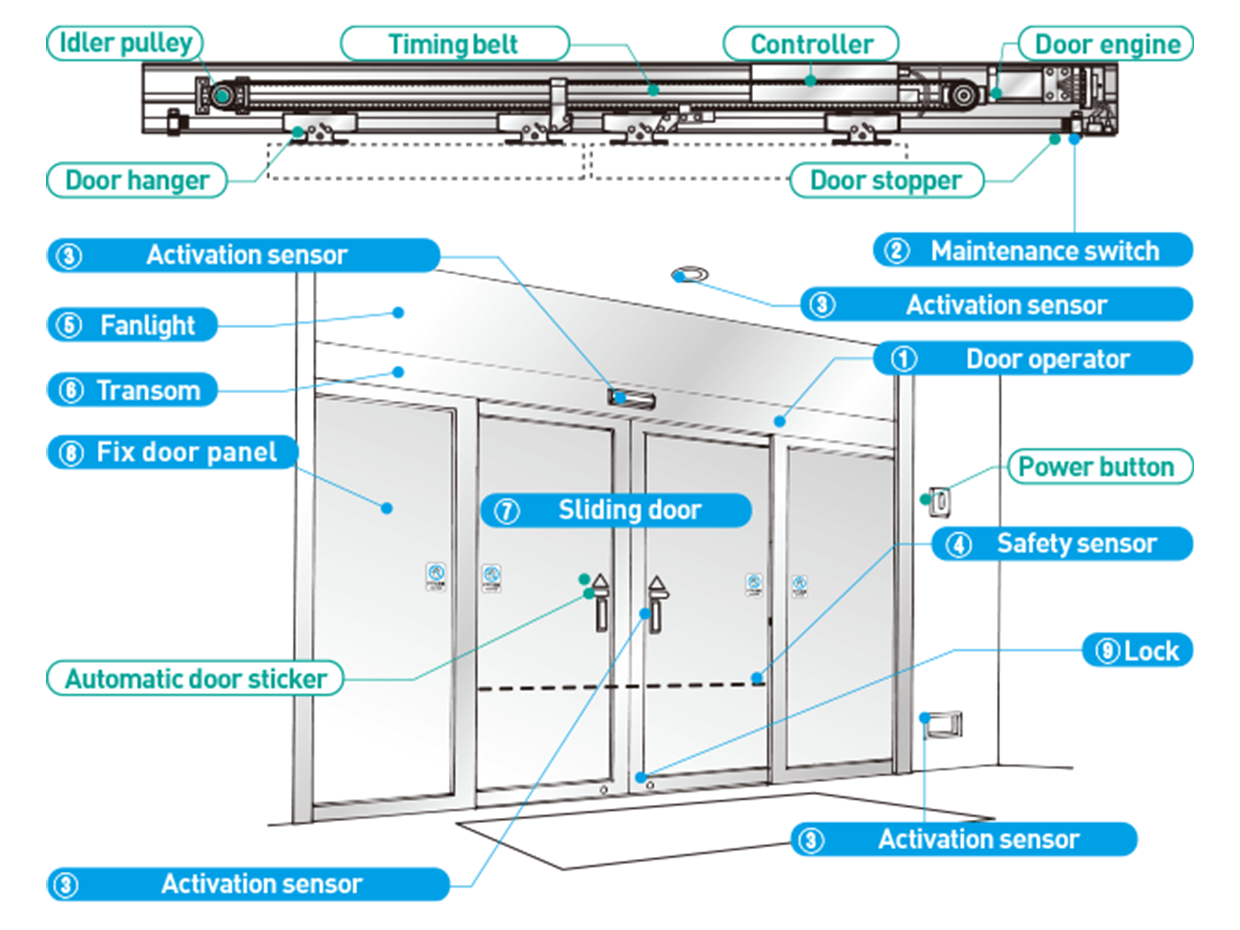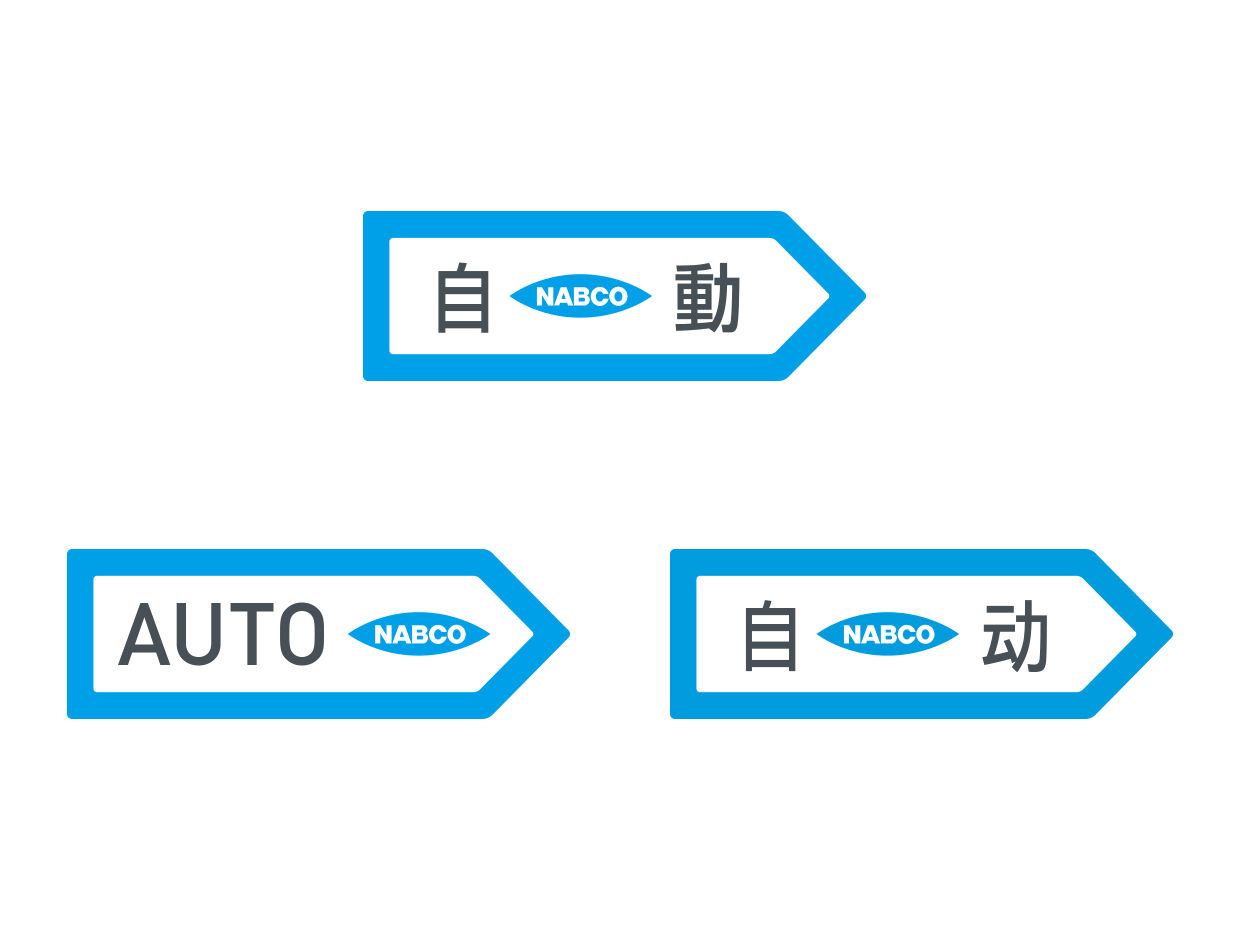Automatic doors provide a convenient and comfortable access solution to various environments and extra values to the spaces and users.
Major types of automatic doors
Mechanism

Automatic door opens when the door controller receives an activation signal by the sensor and then activates the gear motor to drive the belt and pulley. When no one is detected inside the activation area, the door starts closing after a designated period of time.
Safety guideline

The Japan Automatic Door Association(JADA) published the Safety Guideline for Automatic Door to raise the awareness of safety when using automatic doors. Although automatic doors are carefully designed to ensure safety, risks still remain in case they are misused. Therefore the understanding and cooperation by the relevant players such as owners, architects, and etc. is essential to provide a safe and easy access to everyone.
Benefit

Automatic doors for architectural use have become popular since the late 1950s. Today, there are more than two million automatic doors operating in Japan. Automatic doors not only offer convenience to users but also various benefits such as energy saving, security, and hygiene.




